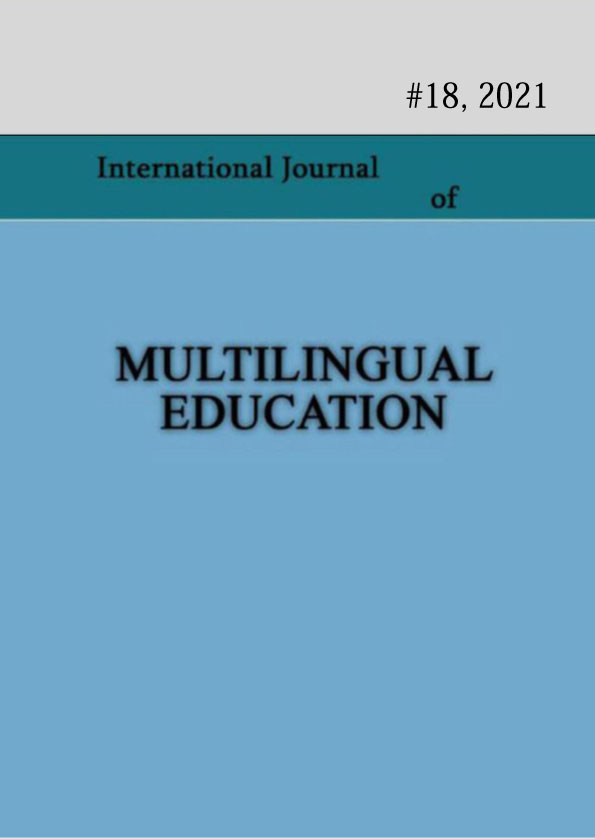Rethinking Language Education policy in the Context of Multilingual/ Multicultural English
Keywords:
Global English, language policy, gap, and multilingual policyAbstract
Globalization has brought about a phenomenal spread of English. This spread has led to the emergence of the newborn varieties which has created serious challenges to language teaching pedagogy and language education policy. Bangbose (2003) has clearly pointed to this issue, stating “as researchers in world Englishes, we cannot consider our job done if we turn a blind eye to the problems of educational failure or unfavorable language policy outcomes” (as cited in the Council of Europe, 2007, p. 31). It seems that there is a mismatch between the advances that happened in the field of applied linguistics and language education policy. This paper focuses on language education policy in the context of global English because it is considered one of the influential factors in the gap between English lingua franca reality and English as a native language. First, it gives a brief overview of the recent situation with regard to English and shows the recent reality of multilingual English and its multifarious aspect (Rahal, 2018 & 2019). It also discusses the conceptual gap in language education policy. It points to the conceptual gap between the sociolinguistic reality of English and the language education policy that is still oriented towards English as a native language. Then, the paper points to the need for a language policy that includes linguistic diversity.
References
Blommaert, J. (2008). Grassroots literacy: Writing, Identity and Voice in Central Africa.
London: Routledge.Council of Europe. (2007). From Linguistic Diversity to Plurilingual Education: Guide for the Development of Language Education Policies in Europe. Strasbourg.
Rose, H. & Galloway, N. (2019). Global Englishes for Language Teaching. Cambridge: Cambridge University Press.
Crystal, D. (2003). English as a global language. Cambridge: Cambridge University Press. Graddol, D. (1997). The future of English? London: British Council.
Jenkins, J. (2006). Current perspectives on teaching world Englishes and English as a lingua franca. TESOL Quarterly, 40, 157–181.
Jenkins, J. (2012). English as a Lingua Franca from the classroom to the classroom. ELT Journal, 66 (4), 486-494.
Kachru, B. B. (1985). Standards, codification and sociolinguistic realism: the English language in the outer circle. In R. Quirk and H.G. Widdowson (Eds), English in the world: Teaching and learning the language and literatures (pp. 11-30). Cambridge: Cambridge University Press.
Mbufong, P. (2013). The Cameroonization of English. US-China Foreign Language, 11(6), 475-482.
McKay, S. L. (2002). Teaching English as an international language: Rethinking goals and approaches. Oxford: Oxford University Press.
Rahal, A. (2018). English or Englishes? A question of multilingual reality. In B. Christiansen, & E. Turkina (Eds.), Applied psycholinguistics and multilingual cognition in human Creativity (pp. 83-102). USA: IGI Global.
Rahal, A. (2019). Transdisciplinary Approach to Linguistic Diversity: Can We Co-Exist Without “One English”? In V. X. Wang (Ed.), Handbook of Research on Transdisciplinary Knowledge Generation (pp. 383-396).USA: IGI Global.
Safotso, G. T. (2012). Aspects of Cameroon Francophone English (CamFE) Phonology. Theory & Practice in Language Studies, 2(12), 2471-2477.
Shohamy, E. (2006). Language Policy: Hidden agendas and new approaches. Oxon: Routledge.
Tunde-Awe, B. M. (2014). Nativization of English language in multilingual setting: The example of Nigeria. Academic Journal of Interdisciplinary Studies, 3(6), 485-492.
Downloads
Published
How to Cite
Issue
Section
License
Copyright (c) 2021 Aicha Rahal

This work is licensed under a Creative Commons Attribution-NonCommercial 4.0 International License.
Copyright (c) - Authors who publish with this journal agree to the following terms: Authors retain copyright and grant the journal the right of first publication with the work simultaneously licensed under a Creative Commons Attribution-Noncommercial 4.0 International License, which allows others to share the work with an acknowledgement of the work's authorship and initial publication in this journal. Authors are permitted and encouraged to post their work online (e.g., in institutional repositories or on their personal website) prior to and during the submission process, as it can lead to productive exchanges, as well as earlier and greater citation of published work (see The Effect of Open Access). Authors may enter into separate, additional contractual arrangements for the non-exclusive distribution of the journal's published version of the work (e.g., post it to a repository or publish it in a book), with an acknowledgement of its initial publication in this journal.

